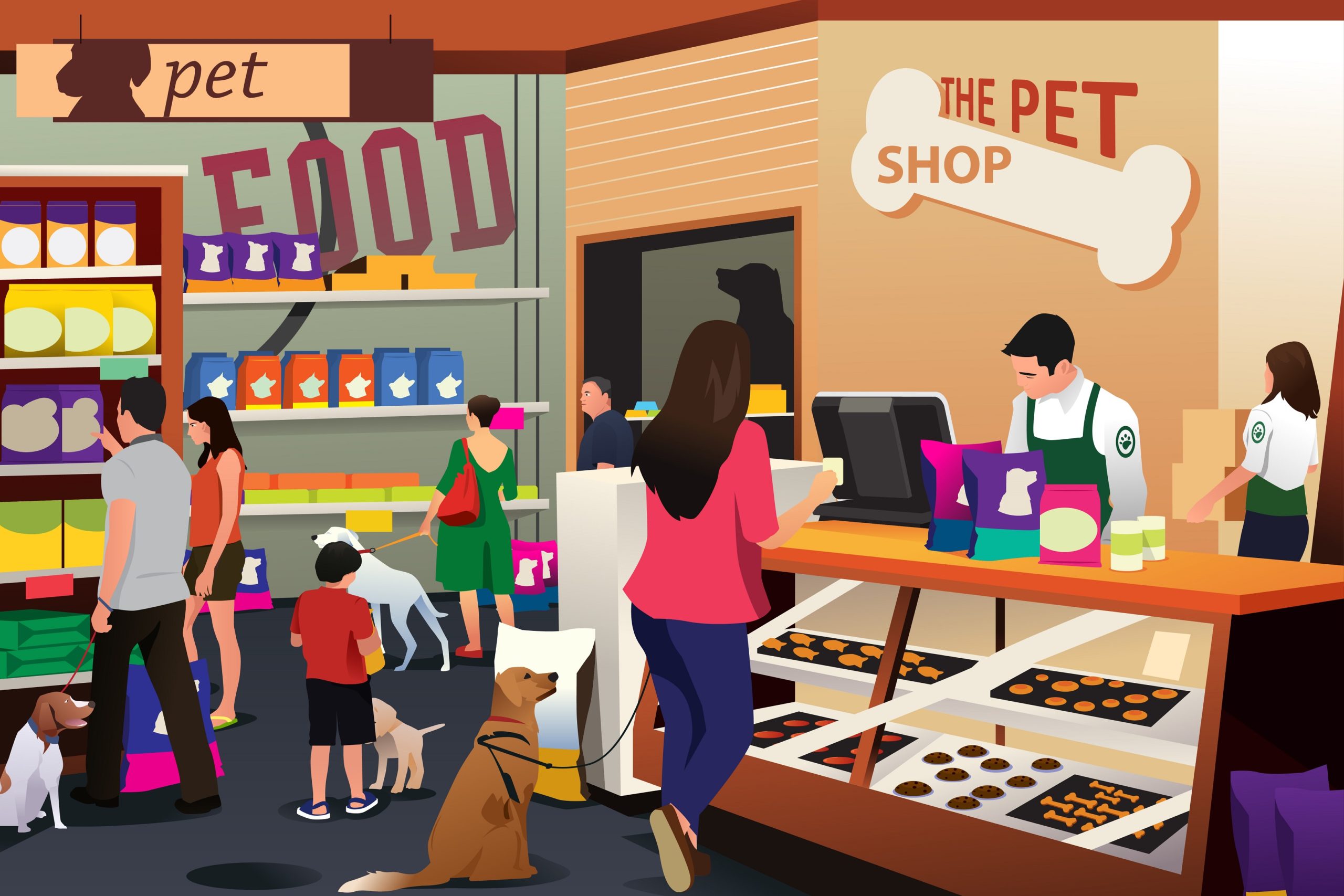The first graph plots the PPI pricing path of dog and cat food and other pet food vs. the pet food retail CPI.
- Pricing remained essentially stable for all groups through most of 2020. The first change was that the PPI for Non-Dog/Cat Pet Food began moving up in November. This lift has continued but this small category has little impact on overall Pet Food Retail Prices.
- The Dog and Cat Food PPI moved up sharply in July 2021 then essentially stabilized until the end of the year. This turned Retail Prices up slightly, only +1.6 percent vs 2019 by December 2021.
- In 2022, the Dog & Cat PPI turned up in Jan/Feb, stabilized in March/April, rose sharply in May/June, then grew slowly in July/August. Pet Food Retail prices began growing in February. This increase accelerated in March and continues through August. The Retail inflation rate for Pet Food is now 67 percent of the PPI increase for Dog and Cat Food. In February it was 31.6 percent and only 25.4 percent back in December 2021. This gap is definitely narrowing as the Retail price increases are more closely matching the increase in manufacturing costs. By the way, the increase for Other Pet Foods is a meteoric +33.7 percent vs. 2019. This is huge but as you will see later in the report, it is not the biggest increase in any Pet Food category.
Obviously, it takes a while for a rise in the PPI to impact retail prices. Also, as we saw in most of 2020 and in the second half of 2021, stability in the PPI usually generates stability in Retail prices.
Dogs & Cats “rule” the pet food segment just like they “rule” the overall pet industry. However, the lift in prices for manufacturing Food for Other Pets has now gotten so large that it is having an impact in pushing Pet Food Retail Prices up.
Gibbons next drills a little deeper into the “ruling” Dog and Cat Food categories. We will look at the individual PPI history for Dog Food and Cat Food and the two largest sub-categories in each – Dry/Semi-moist and Canned. Using December 2019 as a base, the chart will track and compare the Pet Food CPI and the PPI history for all groups from May 2020 to August 2022. The US BLS is now releasing timely data on these specific categories so that it can be compared to the most recent numbers from the big groups…
- The PPI for all categories was essentially unchanged from December 2019 until October 2020. At that time manufacturers’ prices in the Canned Dog Food category moved up 1.1 percent.
- In October 2020, Pet Food retail reached bottom in their deflationary movement. The price increase in Canned Dog Food slowed overall Pet Food deflation and essentially stabilized prices near the 2019 level.
- Both the individual PPIs and the overall Pet Food CPI plateaued from November 2020 through May 2021.
- All prices moved up slightly in June 2021, but the PPIs took off in July. The Pet Food CPI also was above December 2019 for the first time since February 2020.
- Canned Dog Food led the skyrocketing PPI prices in July 2021, but all categories had a significant increase. The increase continued in August, but the CPI unexpectedly dipped slightly below December 2019.
- The PPIs for all groups essentially stabilized from September through December 2021 while the Pet Food CPI began to increase, especially from Nov>Dec.
- In January 2022, the PPIs for all but Canned Dog Food turned up again. Their increase accelerated in February, with Canned Cat Food skyrocketing up to +13.6 percent, almost equal to the overall increase by Canned Dog Food. The Pet Food CPI moved up slightly in January and then inflation took off in February.
- The PPIs stabilized again in March, but we should note that prices for Canned Dog Food have been stable since August, after the spectacular Jun>August lift. While manufacturing prices stabilized, inflation in Pet Food Retail began accelerating
- In May/June all PPIs took off, with the biggest lift in the period since 2019. They stabilized in July but grew again in August. The Retail Pet Food prices have grown steadily since March. There is usually a timing delay from the PPI to the CPI as it takes time for the impact to work its way from manufacturer to retailer to consumer. The big PPI lift in June probably means that Retail Pet Food prices will continue to increase.
- We see that the Canned Food categories have significantly more pricing volatility than Dry Food for both Dogs and Cats. Canned Dog Food led the way in the PPI lift and ended up with by far the biggest increase of any category in the Pet Food segment, +38.8 percent. Canned Cat Food finished second in Dog/Cat at +25.4 percent.
- However, when you look at how these individual PPIs compare to the overall PPI for Dog or Cat, it is readily apparent that Canned Cat Food has a much larger share of total Cat Food than Canned Dog Food has of Total Dog Food.
In terms of what will happen in the future, Gibbons recommends turning again to the first chart. The PPI for Dog/Cat Food was stable through April but turned sharply up again in May/June and continues to grow. When manufacturer prices rise, distributors and retailers must look closer at their product mix. For items that cost more, they can raise prices, accept lower margins or some combination of both.
It’s likely that rising manufacturing prices will cause Retail Pet Food inflation to continue to grow. According to Gibbons, we need the PPIs to flatten for the CPI to stop increasing. He hopes that any supply chain issues will be fixed, returning Pet Food Retail and Manufacturing to a more price competitive market.






 (click to enlarge)
(click to enlarge) (click to enlarge)
(click to enlarge)












